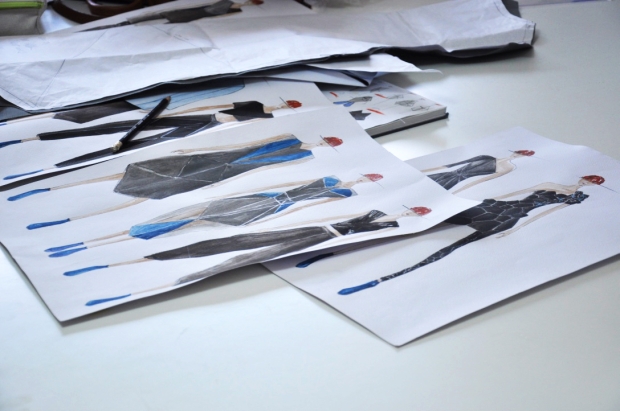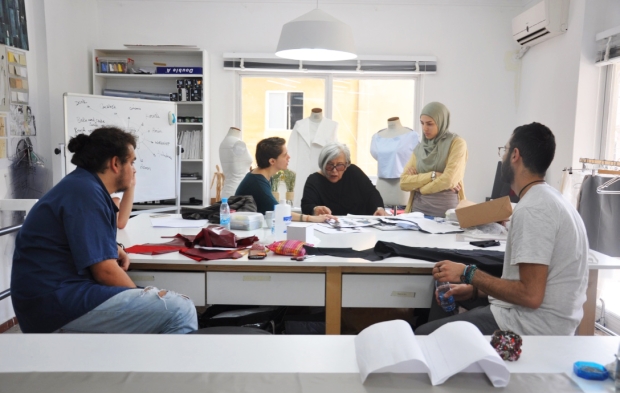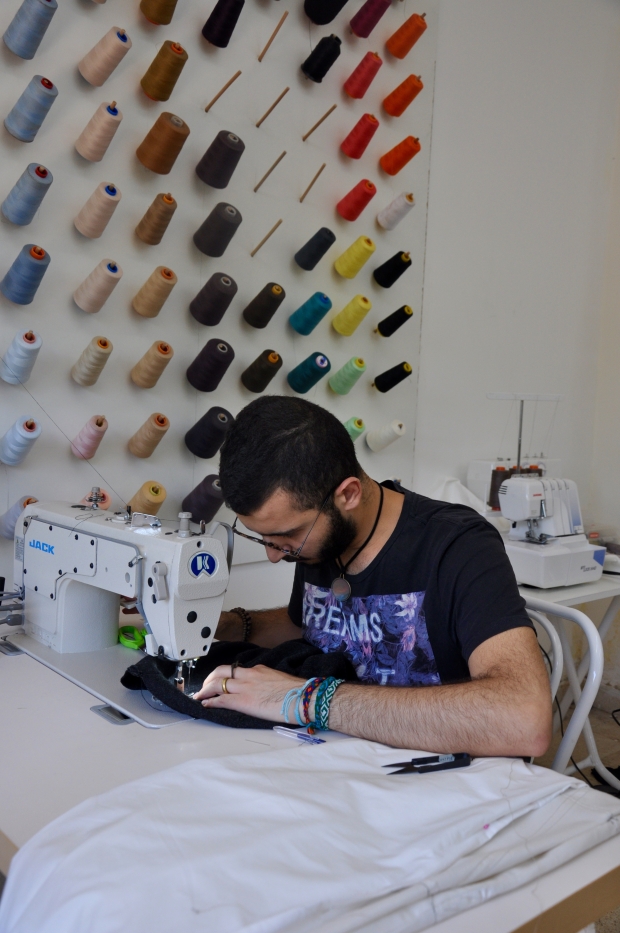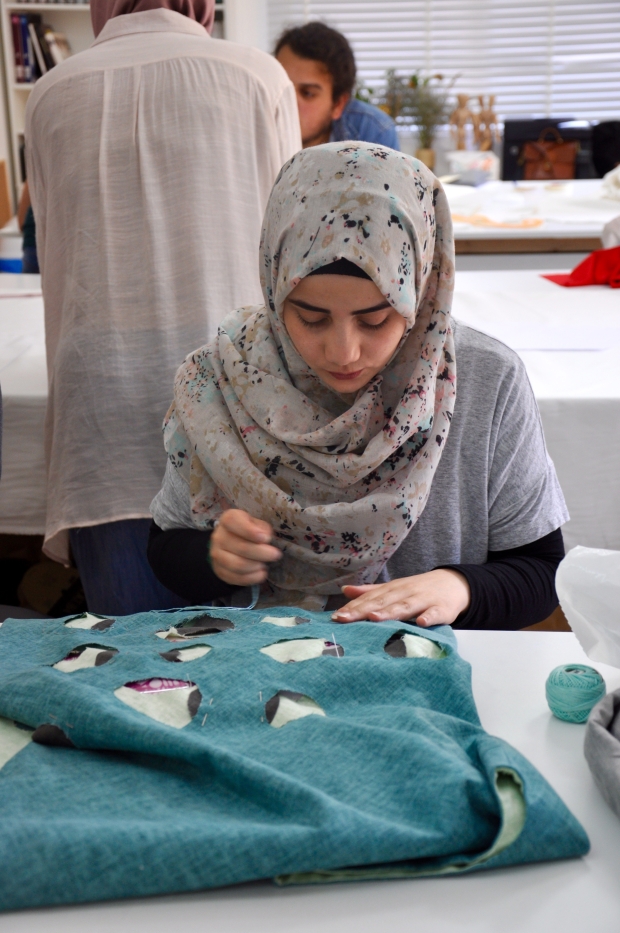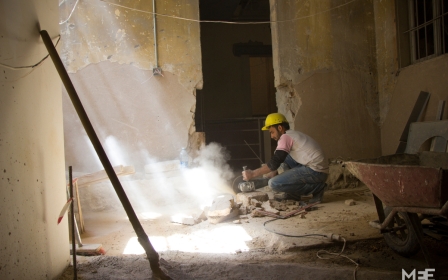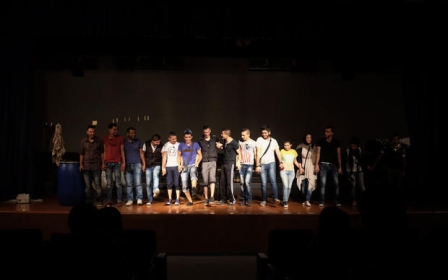Forget pretty things: Designing solutions to Lebanon's social ills

BEIRUT - “The shocking thing in Lebanon is the contradictory principles of beauty and ugliness,” says Raja Moubarak, cofounder of 2B Design, a company working to restore and transform discarded architectural salvage.
The disproportionate number of Lebanese working in design and aesthetics results in immaculately turned out shops, restaurants, and architectural confections, next to decaying unfinished building sites, overflowing parking lots and trash dumps. “Lebanese love to create beautiful new things,” he continues, instead of revisiting the imperfect projects of the past.
While certainly a generalisation, almost every Lebanese one meets, from taxi drivers to MPs, are quick to gripe about some aspect of life here, from the behaviour of drivers, to bureaucratic processes that amount to a pile of disorganised papers shoved in a drawer, to the state’s inability to deal with the staggering refugee crisis that has effectively doubled the tiny country’s population since the 2011 onset of the war in Syria. Yet few are working on solutions.
“The problem with Lebanon [is that people] put a Band-Aid over a broken leg,” agrees Sarah Hermez, founder of the Creative Space, an NGO working to provide fashion design education to underprivileged Lebanese, Palestinian and Syrian young people living in Lebanon. “Things don’t get fixed, just covered up.”
'Forget pretty things'
Last month, during the fourth annual Beirut Design Week (BDW), the design community’s increasing impulse to address these discrepancies came to a head. At workshops, lectures, exhibition and co-working sessions, designers and laypeople alike were urged by Design Week founder Doreen Toutikian to “forget pretty things”. Instead, they were tasked with using design thinking to isolate Beirut’s problems and develop sustainable processes for addressing them.
Design, says the German-educated, electric blue-haired Toutikian, is not necessarily about answering questions once and for all. “Design thinking is about prototyping; it’s about finding problems and streamlining the process of finding solutions. All solutions have an expiration date,” she stresses, “so it’s important to focus on the process rather than the destination.”
It’s not necessarily about aesthetics either. Insofar as design can simply mean ‘planning’, Toutikian says it should be applied to the very basic structures of Lebanese society, especially bureaucracy. In going about accomplishing all the quotidian errands involved with launching a business, “you can spend half your day figuring out where to be, and the other half waiting for someone to manually fill out a form in triplicate,” she laments. “Why not take it all online?”
“Design thinking could also be applied to our hospitals,” chimes in Vrouyr Joubanian, programme manager of the MENA Design Research Centre, which organises Beirut Design Week each year. “And NGOs. The potential for application in Lebanon is endless.”
Vocational training: a starting point
The possibilities may be endless, but many socially conscious Beirut design professionals are using vocational education as a starting point. When Benedicte Moubarak began the process of incorporating 2B Design nine years ago, “my idea was to use [restoring Lebanon’s architectural heritage] as a platform to restore broken dignity, especially for people who don’t have a lot of opportunity due to disability or poor backgrounds.”
Partnering with Lebanese charity Arc en Ciel, the Moubaraks have since developed programmes wherein the wheelchair-bound as well as women without high-school diplomas learn the skills necessary to complete the restoration and art projects envisioned primarily by Benedicte. 2B Design goes on to sell the products at its Geitawi boutique and abroad; proceeds are used to fund the initiatives and pay the fledgling artisans. (Since its launch 2B has expanded these activities to France and the US; the couple is now based in Cambridge, Massachusetts.)
Part of 2B’s mandate has been to challenge some Lebanese people’s idea of what constitutes trash. Raja recalls a moment years ago when his wife was discussing an old soldered gate she’d found in a salvage yard with Omar, the head of 2B’s blacksmith team: “‘What do you want to do with this junk?’ Omar asked dismissively. Benedicte showed him her design and asked him to work on it. When he saw the final piece he was in awe. ‘This is beautiful; it’s completely changed the way I look at my own heritage,’ he said.” Raja and Benedicte say this attitude shift exemplifies 2B’s goals.
The Creative Space team also seeks to engineer a shift in how Lebanese people relate to their surroundings. In learning to “control the space around them,” Hermez believes young people from all backgrounds will be able to lead less cluttered, more serene – and therefore happier – existences. “Even if you’re a Palestinian refugee coming from the camps with very few resources, you can still use simple design techniques to make life simpler and more practical.”
Each year, The Creative Space extends scholarships to four Lebanese, Syrian or Palestinian young people who have exhibited an interest in and talent for fashion design.
The NGO uses proceeds from individual donors, exhibitions and parties, a crowdfunding campaign, as well as sales from a student and faculty-designed ready-to-wear line to provide students with instruction, fabric, a boutique space, transportation fees to and from the school as well as trips abroad for exhibitions and events. “We want them to build their own portfolio,” says Hermez in the bustling, naturally lit Mar Mikhael space. “They should be ready to launch as independent designers upon graduation.”
Not just designers
One afternoon last month, Natalie Fallaha led a free Design Citizenship workshop at the Lebanese American University (LAU), as part of Beirut Design Week. After a general introduction to design theory, she divided the attendees – students, young professionals, as well as older people, only a few of whom were design professionals – into three groups according to the types of social problems they most wanted to address. One particularly stylish group wanted to address problems faced by Lebanese fashion designers; the other two focused on how to promote upcycling in Beirut, and how to get young people in Beirut more engaged with the Lebanese dialect of Arabic.
“It is an absolute necessity to introduce ideas of design to non-designers,” says Fallaha, the founder of branding and digital agency vit-e, and former LAU lecturer in design thinking. “A design thinking approach provides an added value to any discipline – the added value being a rational and informed way to envision the solution to a certain issue, benchmarked by research and a critical sense.”
In many cases, it can be just a matter of recognising design thinking for what it is. After participating in the Disrupt! Design! workshop sponsored by Mideast Creatives earlier this year, conflict and justice consultant Asil Sidahmed realised she’d been doing design thinking all along. “As a consultant, we help governments and NGOs think through social problems with a specific formula,” Sidahmed says. “It’s not results oriented, it’s about a process whereby the inhabitants of the spaces where you want change to occur inform the goal and help it develop.”
In the coming months, Sidahmed plans to incorporate design thinking into a project addressing racism and disregard for people from diverse backgrounds in Lebanese society. But rather than approaching the project with a set of rigid goals, the final event will be a collaborative theatre performance, where actors introduce "activations" which encourage audience participation instead of sticking to a set script.
“When it comes to social design,” she says, “you have to be able to let go of your original idea, however elegant it is, because of the imperfection of humanity. For me, design thinking is a dialectic between elegance and possibility.”
Middle East Eye propose une couverture et une analyse indépendantes et incomparables du Moyen-Orient, de l’Afrique du Nord et d’autres régions du monde. Pour en savoir plus sur la reprise de ce contenu et les frais qui s’appliquent, veuillez remplir ce formulaire [en anglais]. Pour en savoir plus sur MEE, cliquez ici [en anglais].



